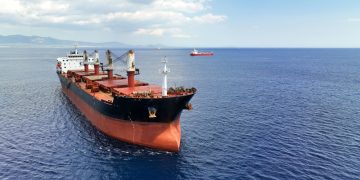https://www.youtube.com/watch?v=_g0hP_dUHSA
On 24 March 1989, the single-hull tanker EXXON VALDEZ was departing the Port of Valdez, Alaska with a full load of North Slope crude oil (approximately 1.26 million barrels) destined for Long Beach when it grounded on Bligh Reef in Prince William Sound.
The resulting oil spill (approximately 258,000 barrels), while not the largest in US history, was clearly the most important. The Valdez spill was the largest in US waters until the 2010 Deepwater Horizon oil spill, in terms of volume released. However, Prince William Sound’s remote location, accessible only by helicopter, plane, or boat, made government and industry response efforts difficult and severely taxed existing plans for response. The region is a habitat for salmon, sea otters, seals and seabirds. The oil, originally extracted at the Prudhoe Bay oil field, eventually covered 1,300 miles (2,100 km) of coastline, and 11,000 square miles (28,000 km2) of ocean.
Public concern over the spill led directly to enactment of the Oil Pollution Act of 1990 (OPA 90), which mandated double hulls for new tankers, response plans, and a number of other remedial measures. OPA 90 also significantly changed the liability and compensation scheme for oil spills in US waters. The amount of oil entering waters of the United States from ships drastically decreased following implementation of OPA 90.
According to official reports, the ship was carrying approximately 55 million US gallons (210,000 m3) of oil, of which about 10.1 to 11 million US gallons (240,000 to 260,000 bbl; 38,000 to 42,000 m3) were spilled into the Prince William Sound. A figure of 11 million US gallons (260,000 bbl; 42,000 m3) was a commonly accepted estimate of the spill’s volume and has been used by the State of Alaska’s Exxon Valdez Oil Spill Trustee Council, the National Oceanic and Atmospheric Administration and environmental groups such as Greenpeace and the Sierra Club. Some groups, such as Defenders of Wildlife, dispute the official estimates, maintaining that the volume of the spill, which was calculated by subtracting the volume of material removed from the vessel’s tanks after the spill from the volume of the original cargo, has been underreported. Alternative calculations, based on the assumption that the official reports underestimated how much seawater had been forced into the damaged tanks, placed the total at 25 to 32 million US gallons (600,000 to 760,000 bbl; 95,000 to 121,000 m3).






























































